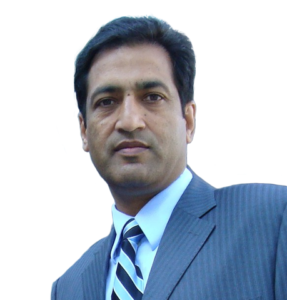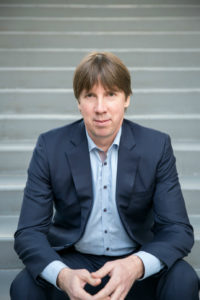May 6 8:00 AM – 9:00 AM Plenary – Francois Blouin, Director of Innovation, ATCO
Title: Energy in a changing world
Abstract:
A disruptive technology is one that displaces an established technology and shakes up the industry or a ground-breaking product that creates a completely new industry. The electricity sector stands to be significantly disrupted by a number of technologies and emerging business model. This will both create opportunities and pose challenges.
This presentation will focus on several key questions:
- What are the technologies and business models that may disrupt the electric utility industry?
- What factors may alter the impact and timing?
- What will be the best way to respond?
Bio:
- François joined ATCO in April 2016 to lead the innovation practice in the Electricity Global business unit where his focus is on utility of the future business models, new disruptive products and services. Key priorities include electrification of transportation, net zero housing and communities, energy orchestration and data platforms. François received his Electrical Engineering degree from Laval University and has been engaged in the field of Information Communications Technology and Innovation for over 25 years including 17 years at Bell-Northern Research and Nortel where he co-authored a book entitled Essentials of Real-time Networking, and has authored more than 75 internal technical reports, customer consulting reports, and external conference papers.
- François was Awarded “Prolific Inventor” for contributing to Nortel’s intellectual property with twenty combined patents and filings in the area of high performance networking, wireless technologies, real-time system design, quality of experience (QoE) & user-centered design methodologies.
- Prior to Joining ATCO, François was the Director of Corporate Architecture & Innovation at VIA Rail Canada, supporting executive management in strategy formulation and digital business-technology process improvements. François created and led VIA Rail innovation program, VIA innovation lab, leveraging ideation and experimentation to continually offer new, validated product fit to evolving customer needs.
May 6 9:00 AM – 10:00 AM Keynote – NSERC, Flora Marguerite (Program Officer) and Jamie Cousineau (Program Officer)
Title: NSERC Updates & How to Apply for a Discovery Grant
Abstract:
NSERC Staff will present NSERC Updates and Discovery Grants Competitions Results 2019. Afterwards, they will give an overview of the peer review process and advice will be given on how to prepare a Discovery Grant application. The workshop will cover topics such as Discovery Grants Evaluation Groups, criteria for evaluation and ratings, tips on how to prepare an application. NSERC staff will be on site the rest of the morning following the presentation to discuss and answer additional questions.
Biographies:
Flora MARGUERITE joined NSERC as a Program Officer in 2017. Flora was previously a Research Facilitator and facilitated several Tri-agency projects. She comes from the research administration and management world where she advised researchers on grants and contracts in Canada but also in France within several post-secondary institutions. She is currently working with the Engineering team for the Discovery Grants program.
Jamie Cousineau obtained her BASc in Nanotechnology Engineering and her MASc in Chemical Engineering at the University of Waterloo. In her time at NSERC, Jamie has worked with a variety of Discovery Grant programs, including the Subatomic Physics Evaluation Section and the Engineering Research Tools & Instruments program. Most recently, Jamie has been the Program Officer for the Electrical and Computer Evaluation Group for two and a half years.
May 6 12:00 PM – 1:00 PM Lunch Keynote – Dr. Maureen Kolla, Senior Manager, Alberta Innovates
May 7 8:00 AM – 9:00 AM Opening Keynote – Prof. Nader Behdad, F’IEEE, University of Wisconsin

Title: Minimally-Invasive Microwave Ablation Antennas for Thermal Treatment of Cancer
Abstract:
Microwave ablation (MWA) employs an interstitial antenna to deliver microwave energy directly into the tumor and heat it to cytotoxic temperatures. This thermoablative approach to cancer treatment is a promising alternative to surgical resection. MWA avoids the high costs, invasiveness, prolonged use of general anesthesia and other risks, and long recovery times associated with surgery. In comparison to other thermal ablation technologies such as radiofrequency ablation, MWA achieves higher temperatures, larger ablation volumes, and shorter ablation times. The vast majority of prior MWA studies have made use of frequencies below 2.5 GHz, in part due to concerns that smaller penetration depths of electromagnetic waves at higher frequencies would preclude the creation of sufficiently large ablation zones. However, we have demonstrated that these concerns are not valid and higher microwave frequencies (e.g. 10 GHz) can indeed be used to perform efficient MWA. At higher frequencies, tissue heating can be performed more rapidly and smaller antennas can be used to perform ablation. In this talk, I will present the results of our investigations in the area of high-frequency MWA and discuss the potential clinical benefits of this approach. I will also present several new types of miniature interstitial antennas recently developed in out group, which can considerably reduce the invasiveness of microwave ablation as a potential treatment for cancer and offer capabilities such as directional heating or local sensing of the tissue properties that are not available from conventional MWA antenna designs.
Bio: Nader Behdad received the B.S. degree in Electrical Engineering from Sharif University of Technology (Tehran, Iran) in 2000 and the M.S. and Ph.D. degrees in Electrical Engineering from University of Michigan – Ann Arbor in 2003 and 2006, respectively. Currently he is a Professor in the Department of Electrical and Computer Engineering and the Harvey D. Spangler Faculty Scholar in the College of Engineering of the University of Wisconsin-Madison. From 2009-2013 he was an Assistant Professor in the Department of Electrical and Computer Engineering of the University of Wisconsin and from 2006 to 2008, he was as an Assistant Professor in the Department of Electrical Engineering and Computer Science of the University of Central Florida in Orlando, FL. Dr. Behdad’s research expertise is in the area of applied electromagnetics. In particular, his research interests include electrically-small antennas, antenna arrays, antennas for biomedical applications, biomedical applications of RF/microwaves, periodic structures, frequency selective surfaces, passive high-power microwave devices, metamaterials, and biomimetics and biologically inspired systems in electromagnetics. Over the years, Dr. Behdad’s research has been sponsored by various U.S. Federal agencies including the U.S. Navy, Air Force, National Science Foundation, and the National Institute of Health.
Dr. Behdad is a Fellow of the Institute of Electrical and Electronics Engineers (IEEE) and was named the Harvey D. Spangler Faculty Scholar by the College of Engineering (2016-2019) and the H. I. Romnes Faculty Fellow (2016-2021) by the Office of Vice Chancellor for Research and Graduate Education (OVCRGE) of the University of Wisconsin. He is the recipient of the Vilas Associates Award from the OVCRGE of UW-Madison in 2016, the 2014 R. W. P. King Prize Paper Award, and the 2012 Piergiorgio L. E. Uslenghi Letters Prize Paper Award of the IEEE Antennas and Propagation Society. In 2011, he received the CAREER award from the U.S. National Science Foundation, the Young Investigator Award from the United States Air Force Office of Scientific Research, and the Young Investigator Award from the United States Office of Naval Research. Prior to 2009, he received five different fellowships and awards from the Office of Naval Research, the International Union of Radio Science (URSI), and the University of Michigan-Ann Arbor among others. His graduate students were the recipients of the 13 different awards/recognitions at the IEEE AP-S/URSI Symposium (2010, 2012, 2013, 2014, 2015), USNC/URSI National Radio Science Meeting (2018), IEEE Pulsed Power & Plasma Science (2013), and the Antenna Applications Symposium (2008, 2010, 2011). Dr. Behdad served serving as the general co-chair of the 4th Arab-American Frontiers in Science, Engineering, and Medicine Symposium and served as an Associate Editor for IEEE Antennas and Wireless Propagation Letters (2011-2015) and as the co-chair of the technical program committee of the 2012 IEEE International Symposium on Antennas and Propagation and USNC/URSI National Radio Science Meeting.
May 7 9:00 AM – 10:00 AM Morning Plenary – Mr. Ravinder Shergill, Principal Technology Architect, Telus

Title:
Cities of the future
Abstract:
The Network is the foundation for connecting People, Machines and Things. We are at the cusp of realization of mass IoT solutions exploiting 5G and fiber based connectivity. These, and the cloud, softwarization and virtualization concepts are primed for realization of the Smart Cities vision. While the mass adoption maybe a foregone conclusion, challenges remain ranging from the business models to the security and management of massive volumes of data.
This talk will explore the next-generation city infrastructure, and the role of the broadband network for the connectivity of IoT, underpinned by next-generation networks. It will look at how the network becomes the ‘distributed’ cloud, facilitating the next wave of services in the Smart Cities domains.
Bio:
Ravinder Shergill is the Principal Architect, responsible for Smart Cities Reference Architecture. With his deep, 30 year experience in networking, he helps set the strategy for next-generation architectures that promote industry ecosystem adoption, builds cross-segment synergies between different ‘tenants’ of the network.
He has served in a variety of lead roles at TELUS, including Software Defined Networking (SDN) Strategist, Converged Core Architect, Converged Edge Architect, IPv6 Enablement Program lead, CO Rationalization – defining the next generation topology in an all-Fiber and all-IP ‘application centric’ infrastructure.
As the Chief Architect, he is presently the technical prime for the Smart Cities Architecture and Strategy for TELUS. Having lead a highly converged architecture from the core of the network to the edge over the past decade+, now he’s rationalizing Smart Cities paradigm leveraging Cloud, IOT, 5G, Virtualization and Softwarization trends, paving the way for a Smarter future.

